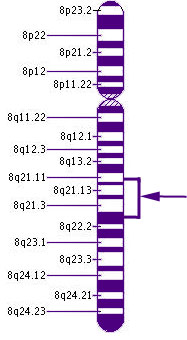Future Genetic Treatments
“It is difficult to imagine a problem that would not be solved in 25 years.” The human genome project has begun. And as that other great scientist Albert Einstein famously said, “Time has all the answers.”
- Francis Crick, Nobel Prize Winner, One of
the Discoverers of the Structure of DNA
Research continues on developing genetic treatments for achromatopsia. In animal models of achromatopsia (dogs and mice), genetic therapy has shown positive results in restoring some cone function. Because the incidence of achromatopsia is rare compared to other retinal disorders, the amount of research and funding may be limited. However, the knowledge being gained from the more extensive genetic treatment research being done to treat conditions such as retinitis pigmentosa and macular degeneration, will likely advance the ability to genetically treat achromatopsia.
In the future, a harmless virus may be used to carry a replacement gene into the cone cells causing them to reactivate. The recent positive results in animal models may lead soon to human studies.
It will take time to perform the clinical research to determine both the effectiveness and safety of these treatments. Altering the genetic code has great potential to cure genetic disease but it contains with it the danger of creating unanticipated genetic complication.
Mice Benefit from Gene Therapy
In a study at the University of Florida and the Jackson Laboratory in Maine, researchers genetically treated achromatopsia in mice by inserting a “normal" copy of the gene. Within 8 weeks, the mice showed improvement.
Alexander, John, et al "Restoration of cone vision in a mouse model of achromatopsia." Nature Medicine online May 21 (2007).
April 22, 2010
Gene Therapy Successful in Dogs
Veterinary researchers at the University of Pennsylvania have successfully used gene therapy to restore cone function in dogs. The improvements were  measured by electroretinalgraphy measurements of the electrical acitvity of the retina and by observation of the dogs ability to function in bright light before and after treatment. The gene therapy is directed at the CNGB3 form of rod monochromatism, the most common form of achromatopsia. It utilizes recombinant adeno-associated virus-mediated gene replacement therapy to deliver the genetic material. This is the first successful treatment model for achromatopsia outside of mice studies.
measured by electroretinalgraphy measurements of the electrical acitvity of the retina and by observation of the dogs ability to function in bright light before and after treatment. The gene therapy is directed at the CNGB3 form of rod monochromatism, the most common form of achromatopsia. It utilizes recombinant adeno-associated virus-mediated gene replacement therapy to deliver the genetic material. This is the first successful treatment model for achromatopsia outside of mice studies.
The improvements in vision in the canines have been maintained throughout the 33 months of the study and are expected to be permanent. The results suggest that early treatment may have better results. Dogs treated after 54 weeks of age had less success.
Watch the video below to see the effect that gene therapy has on one dog. The video linked below through YouTube is from the researchers at the University of Pennsylvania. There are three sections below in the video. Part one demonstrates a control dog without achromatopsia easily navigating a maze in low light and in bright light. Part two demonstrates a dog with achromatopsia easily going through the maze in low light, but struggling in the bright light. Part three shows the treated dog. As expected, the dog can easily go through the maze in low light, but now the dog can easily run through the maze in bright light as well which is a function that would require cone function.
